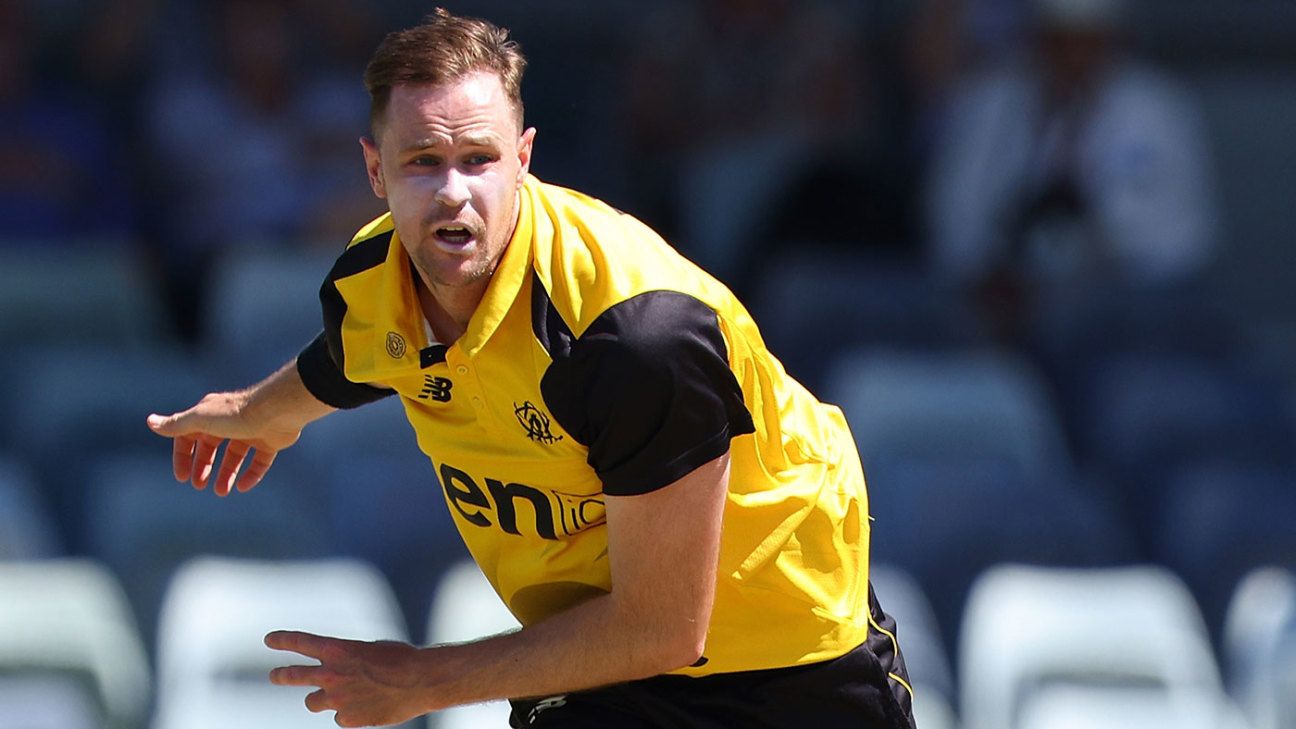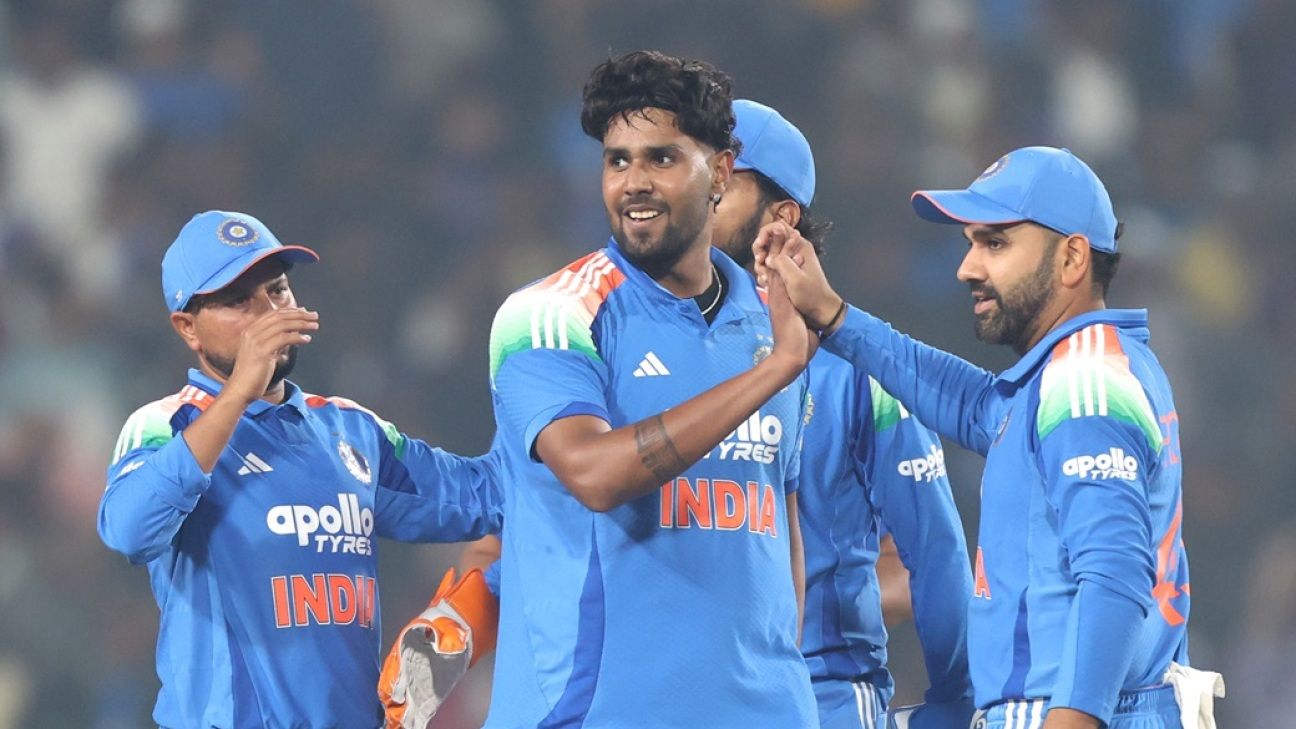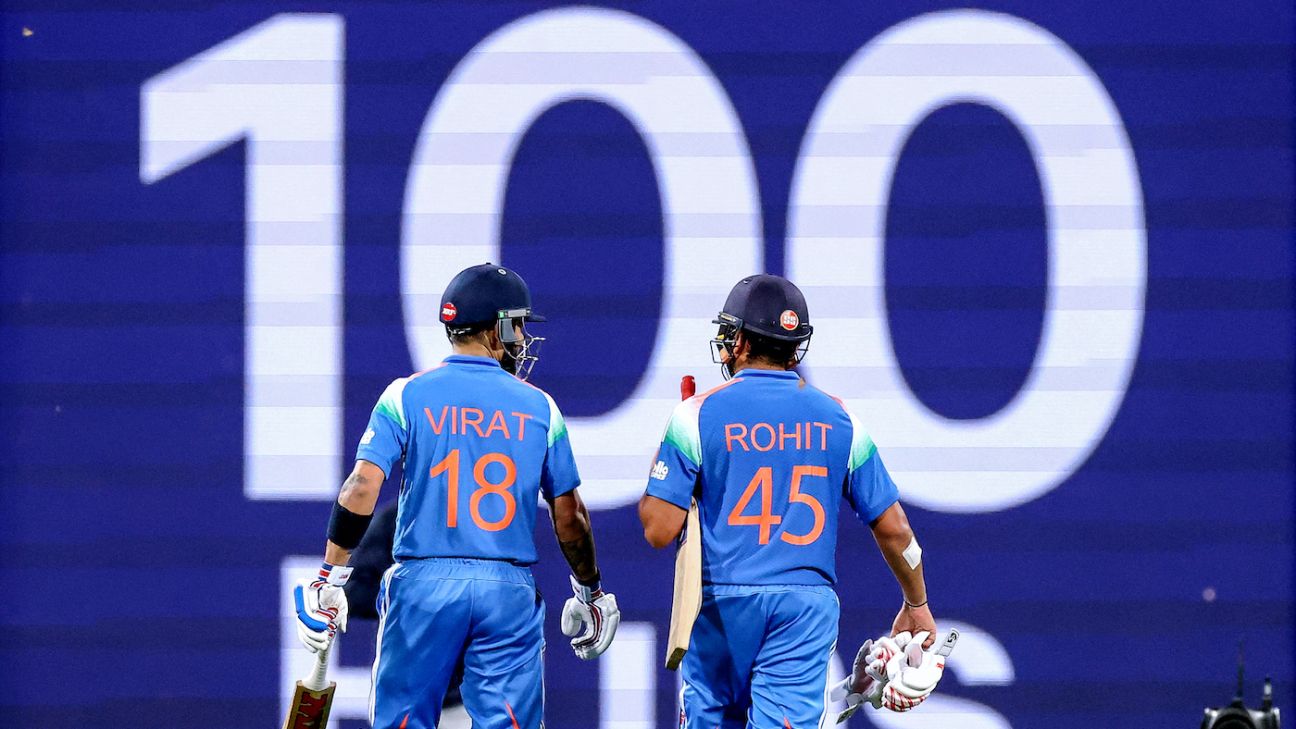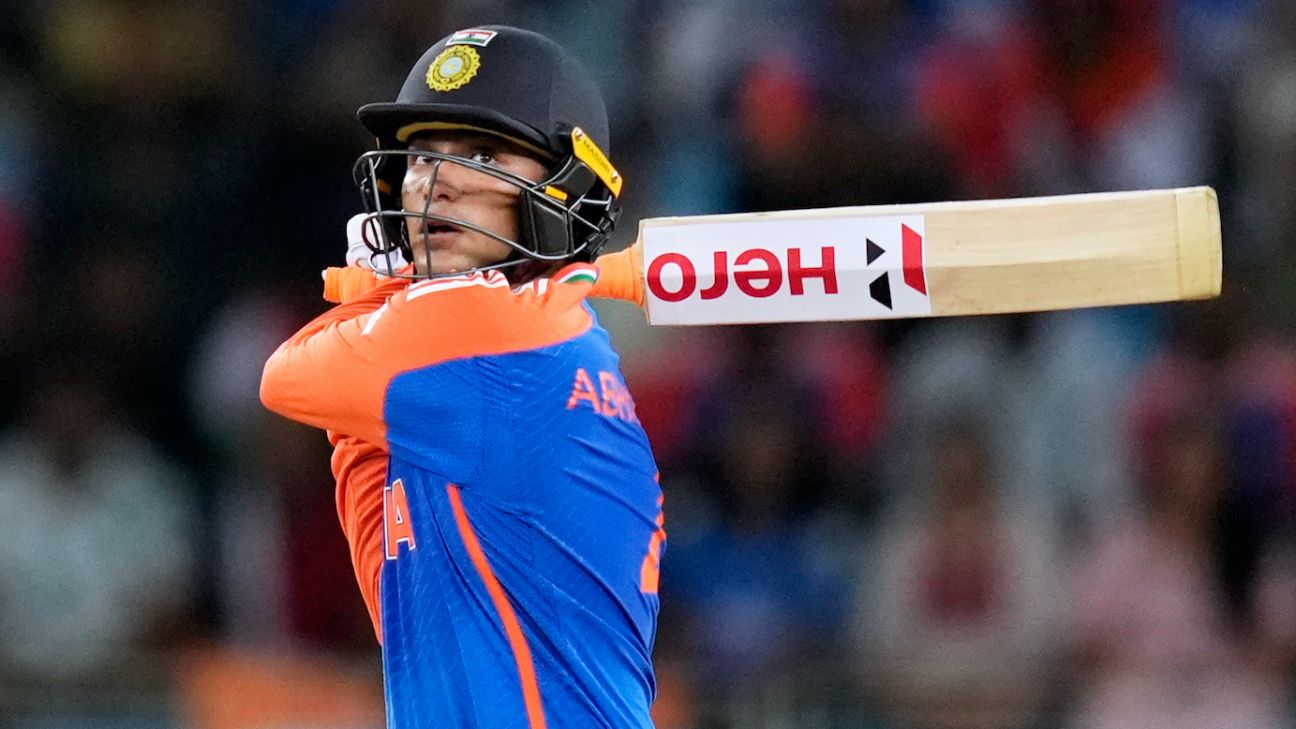Cliff Notes – Extraordinary if you can be a three-format quick
- Jason Behrendorff has retired from domestic cricket after 16 seasons with Western Australia, citing a lack of desire to play 50-over formats and a focus on T20 franchise cricket.
- He has signed a three-year deal with Melbourne Renegades, expressing excitement about the new challenges and opportunities that come with the move.
- Behrendorff highlighted the physical and tactical demands of being a three-format bowler, noting concerns for younger players who may prioritise lucrative short-format opportunities over traditional formats.
Behrendorff: Extraordinary if you can be a three-format quick
Left-arm quick Jason Behrendorff has stepped away from domestic cricket with Western Australia after 16 seasons. He will continue to feature on the T20 franchise circuit and remains available to play T20Is for Australia. He spoke about his decision to retire from the 50-over format, his red-ball career where he averaged 23.85, a move to Melbourne Renegades, the franchise world, and his life-changing back surgery.
How did you arrive at the decision to retire from domestic cricket after 16 years with WA?
The timing feels right. I don’t feel like I’ve really got the drive and the desire to play 50-over cricket anymore. Obviously, Shield cricket, it’s been a little while between drinks. I haven’t played a Shield game for near on eight years. That was a goal to get back to try and play, but I’ve been fortunate to play a lot of white-ball cricket. I’m very much at peace with the decision now. The door is opening for the next chapter, which is super exciting, both personally and from a family point of view. I’m also really proud of what I’ve been able to achieve in Western Australia and also playing for the Perth Scorchers.
I’ve won five One-Day cups and four BBL titles. To be involved in some of the teams I have been, to be involved in series wins for Australia, none of that happens without what I’ve been provided with here in Western Australia. I’m forever thankful for the opportunities I’ve had, the experiences I’ve had, and to give back slightly and leave the place better than when I first walked into it, that makes me really, really proud.
A new BBL franchise in Melbourne
You’re moving to a new BBL franchise in Melbourne Renegades after signing a three-year deal. How do you feel about heading there and leaving Perth Scorchers after so many years?
It is a little bit sad moving from the Scorchers, definitely. I’ve had so many amazing memories there, and I’ve been there from pretty much day dot. But it’s a really exciting move. I’m stoked to be going to play for the Renegades, to be in Melbourne, and to take up a new challenge. That’s something that’s really refreshing, being immersed in a new group, having a different set of challenges, wanting to bring success. Doors open for certain reasons and this one really feels like it’s opened at the perfect time, and that almost if I didn’t step through it, I’d kind of be doing myself and my family a disservice.
The process of moving, the new contracting rules made it tough with the smaller number of players being able to be held over. It basically meant that there wasn’t really much on offer from a contract point of view for me at the Scorchers. It was disappointing not to be able to explore that and stay but equally exciting to move into this next chapter, and it gives us a really clean closing.
It’s been an amazing 16 years here and, almost every time I talk about it, I start to feel myself getting emotional, because it has been my whole adult life. It’s actually hard to put into words how amazing this period has been. I’ve grown up as an adult here. I’ve met my wife, we’ve got a house, we’ve got kids, we’ve done a lot of amazing things, and it’s all been because of cricket. It’s provided me everything I could have asked for.
Behrendorff’s 5 for 44 was the third five-wicket haul in a World Cup match at Lord’s Getty Images
Your first-class numbers were excellent. Do you miss playing red-ball cricket?
My red-ball career was a hell of a lot of fun. We joke about it now, that I actually need a lot of antihistamines to even get a red ball in my hand, otherwise I break out in hives. But in all seriousness, it’s been a tough decision to not be able to play that. It was part of my decision around having surgery in 2019 on my back, and it would have been a much easier decision if I wasn’t very good with a red ball.
“I don’t walk out onto the field anymore thinking is my back going to blow up. I probably wouldn’t be playing cricket, or at least to the level I am today, if I didn’t have that surgery”
I’ve enjoyed a lot of red-ball cricket, and I do miss it. The days watching the boys when they spend 160 overs in the dirt I don’t miss as much. But I’ve got some fond memories of playing with a red ball. That ultimate dream of playing Test cricket for Australia was well and truly alive for a period of time. So much of my strength as a bowler has come from being a consistent red-ball bowler, being able to land the ball most of the time where I want it to, get it to swing a bit, keep the seam up. Those are still skills that I employ every day in white-ball cricket.
How have you evolved as a white-ball bowler?
The real evolution has come more in a tactical space, but then also being able to have different balls in my arsenal; knuckle balls, slower balls, execute the yorker, the wide yorker. Those sorts of skills, along with some tactical nous, has given me a chance to bowl overs one through 20 in T20 cricket, whereas in the past, I’ve been the guy that they go, we’ll bowl you three in the powerplay, we’ll get your fourth out probably before the 12th over, and then you go and put your feet up.
That was a challenge that I put on myself, but also knowing that if I was going to be more selectable in teams around the world, which is what I want to be, I need to be able to bowl other overs. Particularly in the last three or four years, I’ve made really good strides in that space. It’s not always going to go to plan. Bowling at the death is really hard work, and some days you get it right, other days, you still might even get it right and it goes wrong, the batters have a day out. But it’s those challenges that are exciting for me now. I’m such a different bowler than I was even post-surgery.
Jason Behrendorff does his best ‘Gladiator’ impersonation
How hard is it now to be a three-format bowler, physically, technically, skill-wise and mentally?
Being a three-format bowler with the schedules that are going on now, it is extraordinary if you can do it, particularly from a body point of view. As a fast bowler, I haven’t played four-day cricket for a long time, but the toll it takes to bowl 40-odd overs in a few days, to then recover, to then go again within another week or so is huge. And then you throw on top, there might be a one-day game in there. Then you have a break, you play some Big Bash cricket.
Even the shorter formats of the game, they may not be as taxing in terms of days of playing, but the intensity of T20 cricket over a 90-minute period is high. The one-day game, you’re bowling 10 overs within about a three-hour period. If you look at a Shield day, you’re bowling maybe 20 overs throughout the whole day, whereas you’re bowling half that quota in just over a session and a half.
The physical demands of fast bowling are huge. And I look at it as well from a skill point of view. To go, now I’ve got to bowl 20 overs in a day, realistically, 90 to 95% of them are going to be my stock ball, a bouncer, and maybe one that goes across the batter, whereas in T20 cricket you’re almost bowling a different ball every second or third delivery. The tactical shift, the execution shift, because in T20 cricket if you miss your execution by the smallest of margins now, blokes are able to hit you wherever they feel like, it is incredibly difficult. That’s why I think we’re seeing the game transition into more specialty roles, particularly for quick bowlers.
There are some really good young quicks coming through in WA and around Australia, do you have a fear that it’s going to be difficult for them to play all three formats?
I do have a bit of fear in that space, because of what we talked about from all facets. And also the other part of it is, without beating around it too much, the money and opportunities in short-format cricket that can be presented almost straight away at times as a younger cricketer, sometimes you might go, that outlay is going to cost this much, I’m going to get this much back straight away by playing in that tournament. Whereas a longer-term view of playing Shield cricket, working towards a Test career, things like that may not even enter some guys’ minds. The next probably three to five years, I think, will be very telling of how guys will potentially look to structure their careers going forward.
Jason Behrendorff removed both Galle openers with the new ball SLC
You played in five different leagues in five different countries between July and February, what was that experience like?
The franchise world is a massive beast, and it’s an exciting one, and one that over the last six to nine months I’ve really experienced more. Again, it’s part of my decision to go where I am now, because I love that. I love being able to travel. I love being able to play cricket in all parts of the world, meet new people, play with and against players that I’ve either played with in the past, so it’s great to catch up, or you play against some of the best players in the world, and you challenge yourself against them. I still want to play at the highest level, and you want to play against the best players and to do that playing in franchise competitions is a great way. It also gives me flexibility when I’m home, to be home and actually be present, particularly for my kids.
What are the challenges of moving into a different team, culture, system, style of cricket every second month?
The exciting thing is, you can go into a new environment and you can be authentic. You can be you. I know as a fast bowler with my skill set, realistically most teams are signing me up to bowl some in the powerplay, probably one in the middle and one at the end. I know roughly my role going in, which is nice to have that clarity.
But the big thing for me is you go and embrace a new challenge. You embrace a new group, you get involved, you get immersed in it, whether it’s a two-week competition, four weeks, whatever it is, and you go there and enjoy. Yes, you’re there to win, but generally speaking, if you’re having a good time, that helps the performances on the field, both personally and as a team.
I’m always as well prepared as I possibly can be. It’s hard to do some tactical stuff before you get there but once you get your teeth into it, and you’re on the ground, you try and understand the dynamics within your team and how you fit and how you can help. In terms of from my expertise, it’s helping younger bowlers, helping the balance of the unit, and then making sure you’re well prepared and planned for knowing what sort of challenges the opposition is going to throw at you.
That’s something I feel like I’ve been reasonably good at, but also focusing really on your own game and knowing that when I’m at my best it’s going to take a lot from the opposition to sort of knock me off my best.
You speak of the positives of going freelance. Do you have any fears that guys may step away from the Australian system earlier and not want to push to play for Australia as a result?
It could potentially be an issue going forward. I would love to still think that people are wanting to play cricket for Australia, because I know that I still want to play cricket for Australia. So that’s something that I know in the T20 space, that’s my avenue in and if the phone rang and George Bailey and Andrew McDonald wanted me to play cricket for Australia, I’d love to.
The hard thing will be if suddenly there’s not that drive to play for your country. Whether it’s just a pure money driven thing now, like we talked about there’s other exciting factors about franchise cricket. But if you play really well and play cricket for Australia as well you also get a lot of that. You get to travel the world. You get to play against the best players. You get to play in the best competitions. I’d like to think that it’s also going to still be a big driver for kids growing up to play cricket for Australia.
Jason Behrendorff in his bowling style
You have been key advisor for Cameron Green both before and after he recently underwent the same back surgery you had back in 2019. What did you learn from your recovery and what can he expect moving forward?
It’s definitely changed since I had the surgery. I remember probably for the best part of the first three months, I was so sore. My back felt like a giant concrete slab. I couldn’t move very well. I was still in pain for quite a period of time, and my build back to general movements, then to running, then to bowling, was quite slow.
But chatting to Greeny it sounds like it’s been streamlined a bit since then. The surgery is slightly different. They didn’t have to cut through as much muscle and fascia and those sorts of things to get to the points where they needed to. So there’s less recovery time. And he’s moving beautifully. I saw him three to four weeks post-surgery, he was moving like he hadn’t had surgery. To then see him batting in the nets, running, doing everything, he’s going streets above where I was in that sense.
Giving guys confidence to know that it’s actually not that long a recovery time, with the realistic outcome that just about everyone that’s had it has had an amazing response from it, has got back to playing at the same level, if not higher. And for me, it was a case of, the type of person I am, dotting every i, crossing every t, making sure I was doing it right. It took a little bit longer than I would have liked, and that probably the medical team might have envisaged, but we got it right, and I haven’t had back problems since, which has been amazing.
As a bowler if you’re worried about if something’s going to blow every time you hit the front line, you’re never really putting everything through it. So to have that confidence within my body now, I don’t walk out onto the field anymore thinking is my back going to blow up. I probably wouldn’t be playing cricket, or at least to the level I am today, if I didn’t have that surgery.





